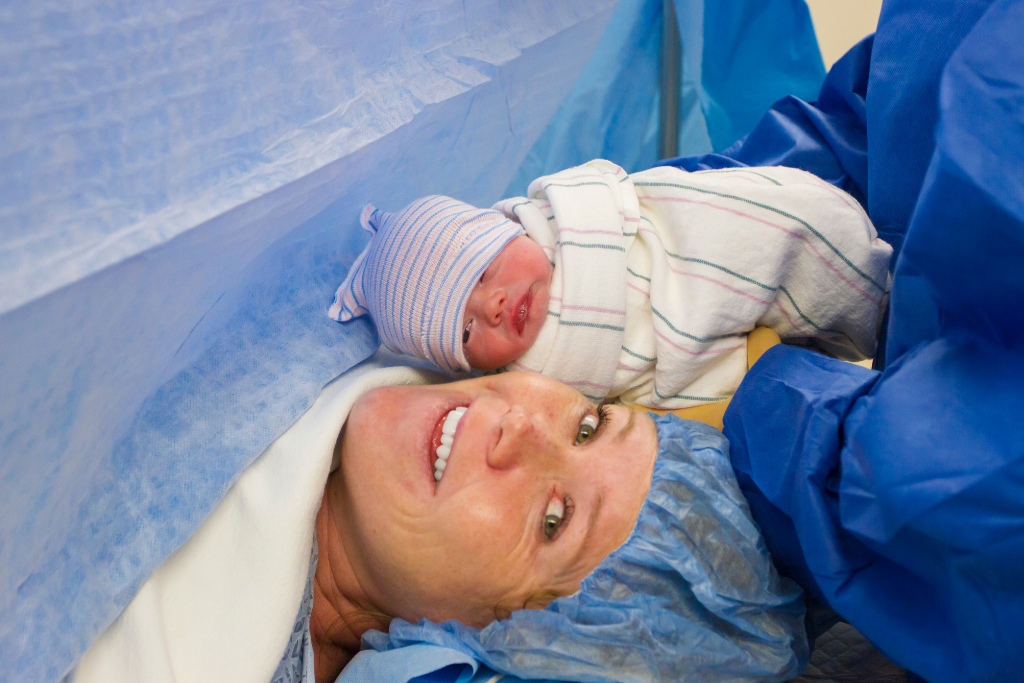My Cart(0)
Cost of a C-section and Aftercare

A cesarean section (c-section) is the surgical delivery of a baby through your belly and uterus and is surprisingly common. One-third of women in the U.S have a c-section when delivering a baby. It can be planned or be by emergency if something goes wrong during labor.
When do I need a c-section?
There are many reasons why a c-section can be safer for your baby than a vaginal birth:
Macrosomia
Your baby may be too big to fit through the birth canal and can't move safely.
You Have Had a C-Section Before
Some women can have a vaginal birth after having a c-section, but in some cases, it is advised against.
Infections
If you have HIV or other infections, you could give it to your baby through vaginal delivery. In this case, it is safer to have a c-section.
You Have More Than One Baby
If you are giving birth to twins or triplets, a c-section might be safer.
The Baby Is Upside-Down
In some cases, the baby can be upside down, meaning the head is on top and the feet or butt is facing down. There are ways to turn your baby around, but in some cases, it is safer for your baby to be delivered via a c-section.
There Are Complications While You Deliver
Sometimes complications occur during labor. It can happen that the labor doesn’t move fast enough or stops entirely, and the doctor might change to a c-section. There are also cases where the baby doesn’t get enough oxygen. The medical personnel detects an irregular heartbeat or if your baby has a congenital disability such as a very large brain due to fluid build-ups and the baby needs to be delivered via c-section.
Placenta
There can be problems occurring with the placenta, responsible for your baby to have oxygen and food. It can cause bleeding during vaginal birth, which happens when the baby's placenta is right above your cervix, called placenta previa.
Medical Conditions
Diabetes or high blood pressure can make a vaginal birth risky; a c-section will help reduce the risks.

Cost of a C-Section
Not surprisingly, the cost of having a c-section in the U.S is very high but varies depending on what state you live in as well as what insurance policy you have. If you have no insurance at all, the costs can sky-rocket from $30,000 for a vaginal birth to $50,000 for a c-section.
If you have insurance, the costs are still high and can run you around $20,000 if you are insured with Medicaid and $24,000 with any other insurance for the c-section. Be sure to check with your insurance provider as some may not cover a c-section due to the risk that it can have on yourself as well as your child.

What Happens After a C-Section
It usually takes 2-3 days to be released from the hospital after a c-section. You should get plenty of rest and take care of the wound. Your doctor will give you instructions on how to handle your wound in the following days after delivery:
- Generally, if your wound is stitched or glued together, you can take showers. Be aware not to scrub or use heavily chemical body wash. Choose a natural soap instead.
- Look out for signs of infection, fever, heavy pain, heavy bleeding, chest pain, difficulty breathing, redness, or lots of fluids running out of your wound. In that case, check with your doctor.
- You can expect vaginal bleeding right after surgery as well as pain and swelling. You can also have breast swelling, and as your hormones change, your hair and skin can change.
- Many women also see red or purple stretch marks on their bellies and breasts. Unfortunately, they won’t disappear entirely, but they will fade with time.
- Don’t lift anything too heavy in the first couple of days, and support your stomach by holding it while you sneeze, cough, or laugh as it can hurt otherwise.
- It’s okay if the pain is too overwhelming, and you can use pain relief such as Advil, ibuprofen, etc.
- Also, don’t forget to drink enough water and stay hydrated.
- You might also have to take mediation during the first few days after your surgery, but you can still breastfeed, and it won’t have a significant effect on your baby.
- There are ways to breastfeed your baby without putting too much weight on your belly, such as the side laying down position or the football hold.
- Focus on nourishing your body with good food. Vegetables make your breast milk have more flavor, and your child might be more likely to eat vegetables when growing up.
- Be aware that you might also feel tired and not have much energy due to all your body's stress. Give yourself time and care. If you keep feeling blue after a couple of days, you might have postpartum depression. Call a doctor or a therapist to help you cope.
-
When you start to feel better, you can try returning to doing physical activities. Start with deep breaths, shoulder circles, and light stretches to stretch your belly.
- However, it’s generally advised to speak to a doctor first before returning to activities such as sports, driving, or lifting anything heavier than your child.

Give your body time to recover, and don’t rush.
unsubscribe at any time without costs.










